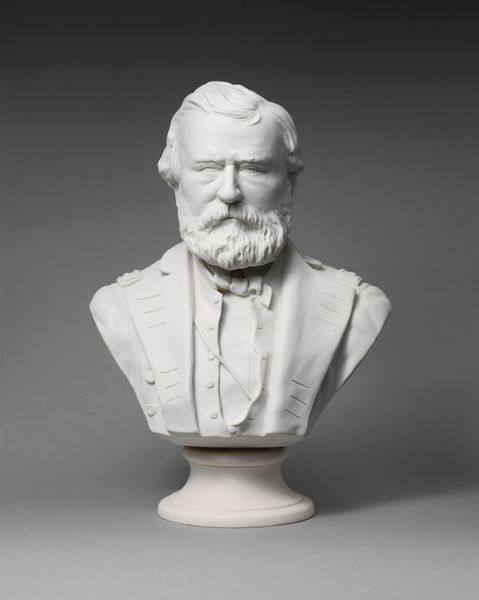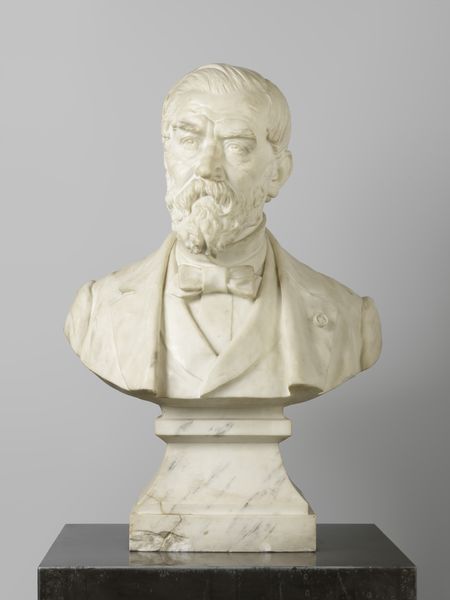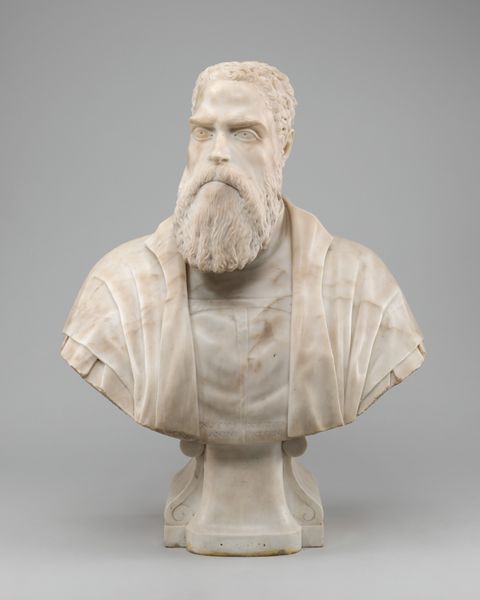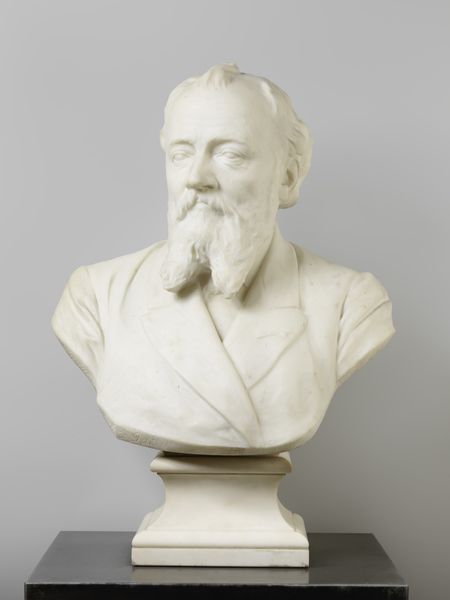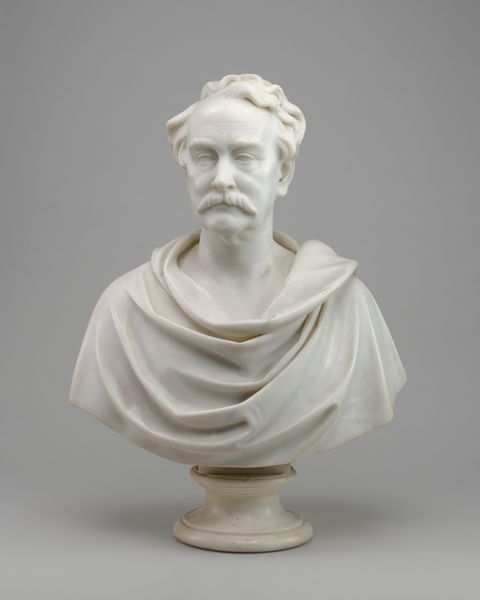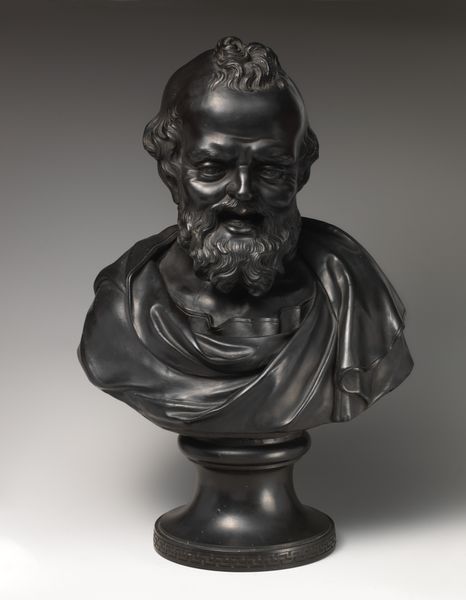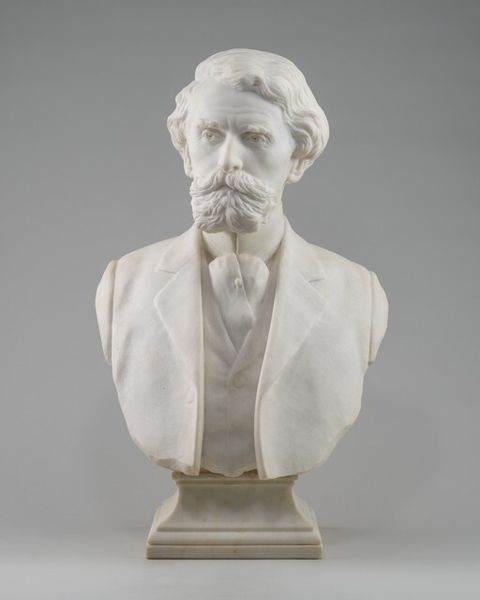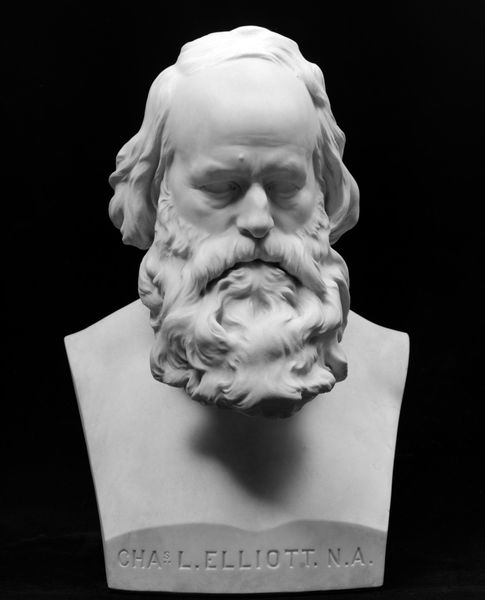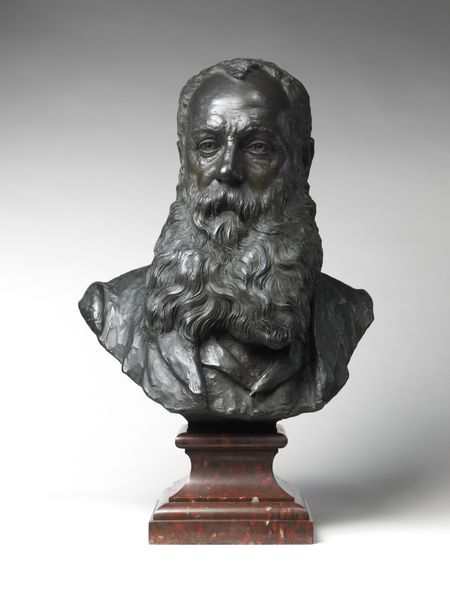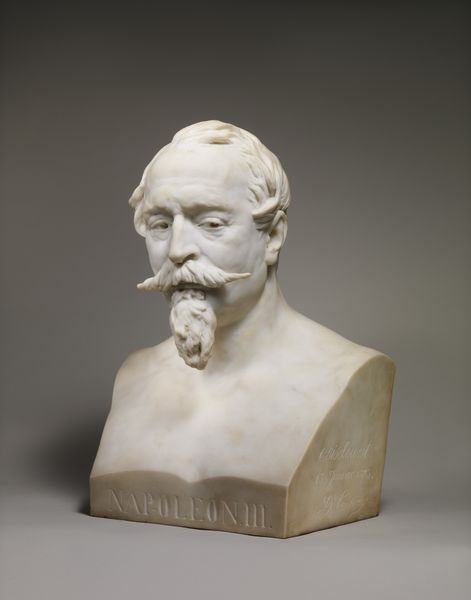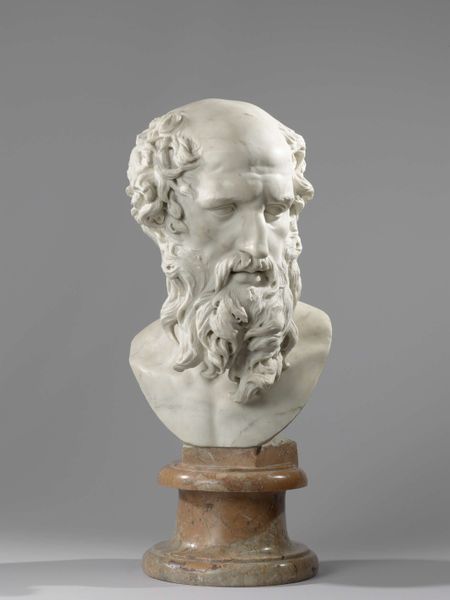
sculpture, marble
#
portrait
#
baroque
#
sculpture
#
sculpture
#
marble
#
italian-renaissance
#
realism
Dimensions: overall with base: 80.01 x 65.88 x 25.72 cm (31 1/2 x 25 15/16 x 10 1/8 in.) overall without base: 60.96 x 65.88 x 25.72 cm (24 x 25 15/16 x 10 1/8 in.) base: 19.05 x 21.27 x 18.42 cm (7 1/2 x 8 3/8 x 7 1/4 in.)
Copyright: National Gallery of Art: CC0 1.0
Editor: Here we have Bernini's marble bust of "Monsignor Francesco Barberini," created around 1623. It strikes me as incredibly lifelike. What layers of meaning do you see embedded in this portrait? Curator: Ah, Bernini! His works are rarely simple representations. Notice how Barberini's gaze avoids direct eye contact, almost a studied humility, but the richness of the marble and the confident carving speak of immense power. The folds of his clerical garments— what stories do they whisper of hierarchy and faith? Editor: That’s a great point, and now I notice the slight turn of his head, an expression of... what? Reserved authority? Curator: Precisely. The turn suggests a man used to being deferred to, a man who listens but also judges. The beard, meticulously carved, speaks of wisdom, experience... the patriarchal figure. Can we see any hints of family power? Editor: Possibly… Barberini's family was incredibly influential at the time. Does this realism then serve to solidify their status, project an image? Curator: Absolutely. It's not merely capturing a likeness; it’s crafting an icon. This is about legacy, about how Barberini wished to be seen and remembered. A timeless emblem of ecclesiastical authority interwoven with earthly dominion. What feelings remain? Editor: Now I see the realism serves to reinforce a powerful image. Fascinating. Curator: Yes, portraits like these are coded messages for their contemporaries, but also enduring symbols for us, centuries later.
Comments
No comments
Be the first to comment and join the conversation on the ultimate creative platform.
